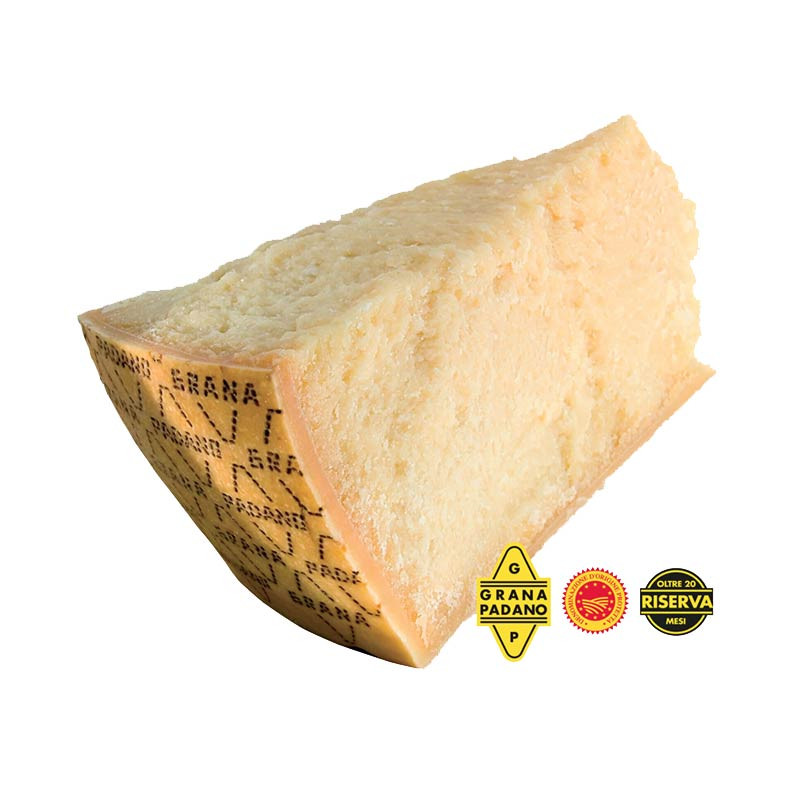




(€21.74 /Kg)
Grana Padano Pdo is aged for 30 Months and possesses excellent characteristics, attested to by the extra check it undergoes, which is followed by a second fire-brand "Riserva".
Its taste is rich and full, fragrant and delicate..a flavour that recalls butter, hay and dried fruit.
Its evident granular structure has an accentuated presence of lactate calcium crystals, an unmistakable triangular flake structure and an intense and homogeneous straw colour.
Ideal to be enjoyed on its own or grated.
It is the perfect choice to satisfy true aficionados and make every meal a celebration for the gourmet palate!
![]()



 Expedition policies
Expedition policies
Fast and secure shipments
 Security policies
Security policies
Packaging specially designed to maintain the freshness of the products.
We accept payments via Stripe, Credit Cards, Satispay, or Bank Transfer
Data sheet